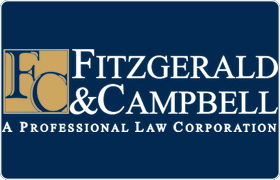Nipomo Bankruptcy & Debt Lawyer, California
Sponsored Law Firm
-
 x
x

Click For More Info:
-
Fitzgerald & Campbell, APLC
400 N. Tustin Avenue Suite 401 Santa Ana, CA 92705» view mapBankruptcy & Debt Lawyers Who Solve Serious Problems
We are a motivated, respected, and experienced law firm that provides affordable services that get results.
800-732-9061
Linda Ann Selig Blonsley
Employment Discrimination, Criminal, Bankruptcy, Personal Injury, Accident & Injury
Status: In Good Standing
Silvia Heeyuhn Sun
Family Law, Contract, Credit & Debt, Medical Malpractice
Status: In Good Standing Licensed: 16 Years
R. Morgan Holland
Estate, Divorce & Family Law, Misdemeanor, Banking & Finance, Bankruptcy & Debt
Status: In Good Standing
Matthew Michael Loker
Class Action, Banking & Finance, Business, Credit & Debt, Consumer Bankruptcy
Status: In Good Standing Licensed: 13 Years
James Patrick O'Neill
Commercial Real Estate, Trusts, Business, Credit & Debt
Status: In Good Standing Licensed: 43 Years
 Gregory Fitzgerald Santa Ana, CA
Gregory Fitzgerald Santa Ana, CA AboutFitzgerald & Campbell, APLC
AboutFitzgerald & Campbell, APLC Practice AreasExpertise
Practice AreasExpertise
